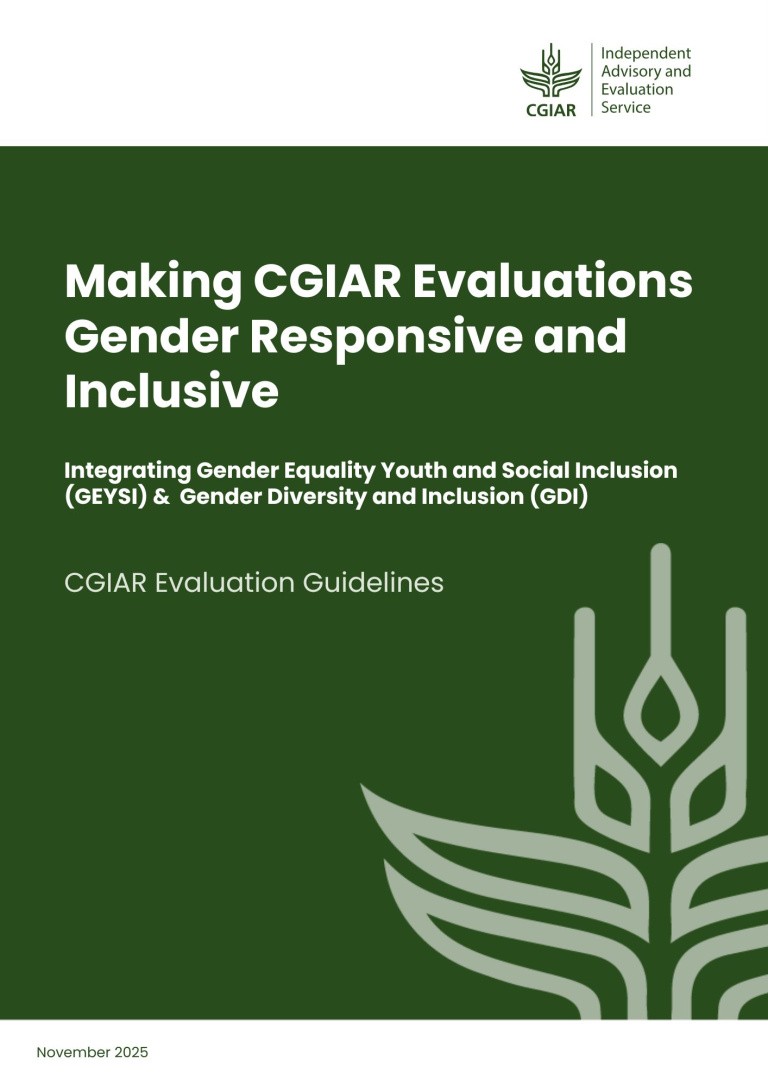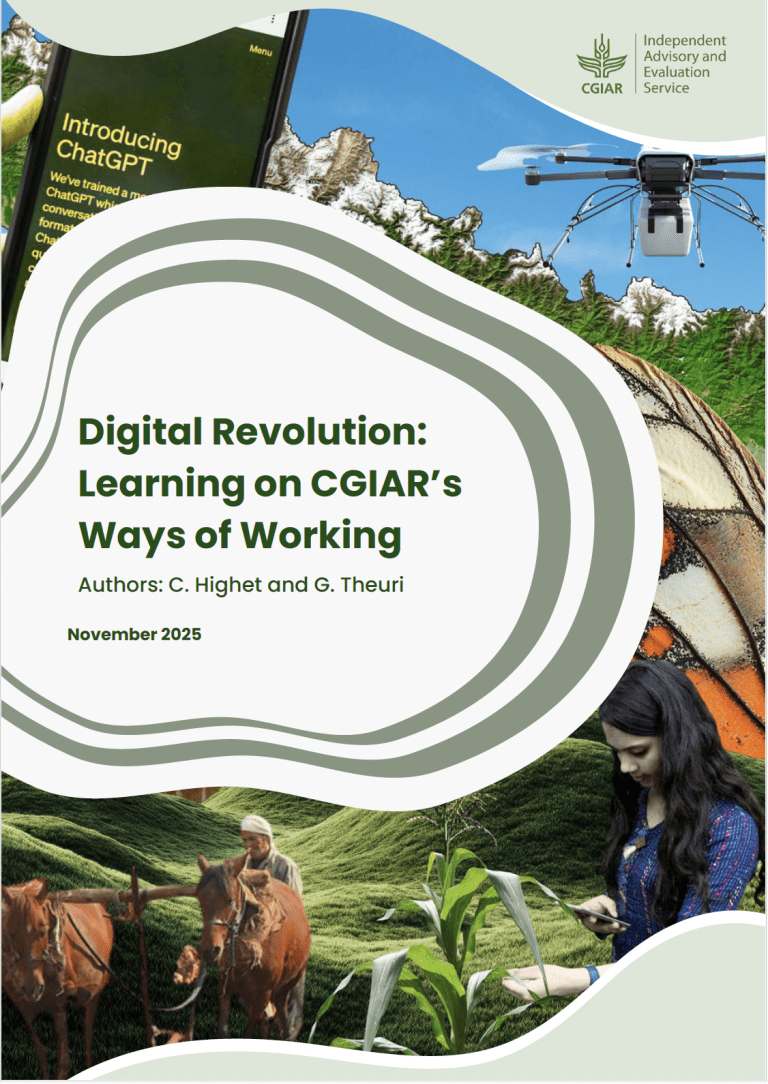Abstract
Integrating Gender Equality Youth and Social Inclusion (GEYSI) & Gender Diversity and Inclusion (GDI) into CGIAR Evaluations
Evaluating GEYSI and GDI requires specific evaluation approaches, questions, appropriate methods of inquiry and data gathering techniques, and dedicatedanalysis. While the Evaluation Framework and Policy frame and guide evaluation, evaluation teams require CGIAR-contextual nuancing.[1] These guidelines build on CGIAR’s own gender-related framing, to focus on how to engage with GEYSI and GDI in process and performance evaluations.[2] The purpose is to provide IAES, CGIAR and evaluation teams with practical advice on how to incorporate a GEYSI and GDI lens to meet two main objectives:
- Guide how to approach GEYSI and GDI in all evaluation phases, and
- Highlight the roles and responsibilities for evaluating GEYSI and GDI.
GEYSI and GDI considerations should be integrated across all phases of the evaluation process, irrespective of the evaluation scope and theme, recognizing that some evaluations will assess equity or inclusion as a primary focus.
[1] Three CGIAR documents identify the need to focus on GEYSI and GDI in an evaluative process: (1) sub-study under the SG Evaluations (2024); (2) GENDER Platform Evaluation (2023); and (3) Gender, Youth, Inclusion and Diversity Evidence Compendium (2021), available by request from IAES.
[2] Additional related Evaluation Guidelines and Method Notes are available.
Citation
CGIAR Independent Advisory and Evaluation Service (IAES). 2025. Making CGIAR Evaluations Gender Responsive and Inclusive: Integrating Gender Equality Youth and Social Inclusion (GEYSI) & Gender Diversity and Inclusion (GDI) into CGIAR Evaluations. Guidelines & Toolkit. Rome: IAES, Evaluation Function
Publisher
CGIAR Independent Advisory and Evaluation Service (IAES), Evaluation Function





